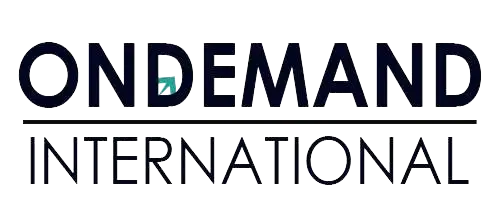
Overview: Types Of Taxes In India
The government must collect taxes from eligible residents in order to administer a country. Irrespective of where we reside in the globe, contributing to society to the local authorities is an important aspect of everybody’s life. Taxation can be acquired in a variety of ways, including from the national govt, direct and indirect taxes, state and local taxes, and so on.
Now, in order to understand more about taxes, types of taxes in India, have a deep look at this article.
What is tax?
Authorities impose taxes on residents to create revenue for programs that would strengthen the economic growth and enhance the level of living of the population. In India, the administration’s right to tax people is drawn from the Indian Constitution, which divides the authority to impose taxes between the Federal and Local governments. All charges charged in India must be accompanied by a regulation issued by the Legislative enactment.
Types of Taxes In India
The following types of taxes are broadly distinguished into two types, they are as follows:
- Direct Tax
- Indirect Tax
To understand each of the following in detail keep reading the article till the end.
Income Tax Slab In India For The Year 2022
Everybody with a source of revenue in India is required to contribute taxable income. This applies to Indian citizens under 60 years as well as those more than 60 years. Hindu Undivided Family, Association of Persons, Body of Individuals, Corporate Firms, Local Authorities, Companies, and any Virtual Jurisprudential Individuals are among the different bodies that must pay any taxes.
| Income Tax Slab Rate for FY 2018-19 (AY 2019-20) | ||||
|---|---|---|---|---|
| Age | Income Tax Slab (taxable income) | Income Tax Rate (%) | ||
| <60 years | <2.5L | NA | ||
| >2.5L < 5L | 5% of the sum that exceeds 2.5 L | |||
| >5L <10L | 20% of the sum that exceeds 5L | |||
| >10L | 30% of the sum that exceeds 10L | |||
| Age | Income Tax Slab (taxable income) | Income Tax Rate (%) | ||
| >60 years | <3L | NA | ||
| >3L <5L | 5% of the sum that exceeds 3L | |||
| >5L <10L | 20% of the sum that exceeds 5L | |||
| >10L | 30% of the sum that exceeds 10L | |||
| Age | Income Tax Slab (taxable income) | Income Tax Rate (%) | ||
| >80 years | <5L | NA | ||
| > 5L < 10L | 20% of the sum that exceeds 5L | |||
| >10L | 30% of the sum that exceeds 10L | |||
Direct Tax
Taxation, such as payroll taxes, tax base, land value tax, and residential real estate taxes, is one form of subsidy that an individual is responsible to pay directly to the government. Such direct taxes are estimated based on the payer’s capacity to afford, which indicates that the greater the taxpayer’s money ability to pay, the bigger the payment.
A direct tax can be broadly classified into many types, they are as follows:
Tax on Financial Assets:
An adult’s financial assets are everything the individual owns for private use and productive investments. A financial intermediary for a firm is something that can be used for and over a year and is not designed to be transferred or disposed of throughout its operations. Asset classes include equipment, ranches, enterprises, residences, stocks, sculptures, commodities, and automobiles to name a few.
The dividend tax duty is payable on earnings earned from the selling of commodities or interests. Capital tax is divided into two categories based on the holding period: quick profits and lengthy benefits.
Taxation on revenue:
The most known direct tax levied by the government on annual earnings made by firms and people is taxable income. Business tax is a type of income tax that is levied on profits made by businesses in India. Income tax is calculated according to the rules of the Income Tax Act of 1961 and is deposited to the government directly each year. The taxation charge is determined by the total income or marginal tax rate.
In the case of paid personnel, the tax rate may be charged in the format of TDS. Self-employed workers must tax their claimed earnings as reported on their Taxable Income. ITR stands for Individual Tax Return, and it is a declaration of income for tax purposes due based on income that is stated and which is filed to the IRS in the authorized structure.
Corporate Taxation:
Both Indian and international organizations are required to pay corporation tax according to the Indian Income Tax Act, 1961. Local corporations pay a corporate income tax on their net profits. International companies whose revenues exist or are believed to arise as a result of their activities in India must also pay the taxes to the Indian government. A total revenue, whether in the payment of dividends, income, or licenses, is chargeable.
Corporate taxes are further subdivided as follows:
- Tax on Securities Transactions: The tax on securities transactions is levied on the profits that businesses make from chargeable financial operations. There is no penalty on these taxes.
- Tax on Extraneous Advantages: This type of tax is imposed on peripheral advantages generated by businesses to their workers, such as maids and transporters.
- Tax on Dividend Distributions: The Dividend Distribution Tax applies to any sum that a local firm declares, distributes, or pays as a reward to its investors. It only applies to local businesses. This levy is not paid by international firms that distribute dividends in India.
- Alternative Minimum Tax: This is enforced on zero-tax businesses, which seem to be businesses that disclose almost no revenue in order to make ends meet on taxes.
Benefits Of Direct tax
- Constructive: Direct taxes can also be quite beneficial. The money collected by direct taxes is approximately proportional to developments in the nation’s economic output. Simply put, if an economy’s prosperity grows, so will its immediate tax records.
- Equitable: Direct taxes are levied on the grounds of a person’s earnings. Individuals with stronger revenue earnings are required to pay more taxes than those whose earnings are weak. In other words, the wealthy pay more taxes than the poor. Taxation is levied on the same percentage of adults who are in similar financial situations. The straight tax’s egalitarian feature promotes fairness and equality among all segments of society.
Indirect Tax
Indirect taxes are imposed by the national and provincial governments on spending, consumer, activities, entitlements, and benefits, but not on ownership or earnings. This comprises immigration restrictions on goods, as well as administrative levies on manufacturing and price associated cost on specific phases of commodity manufacture and sale, among other things. Because they are a progressive approach in implementation and are not based on financial capability, indirect taxes are sometimes referred to as sales taxes.
Indirect tax can be broadly classified into many types, they are as follows:
- Taxes on Entertainment: The county government increases this levy, which is levied on any commodities or activities arts and entertainment. Pleasure Duty is payable on the purchase of computer games, cinema displays, team sports, playgrounds, theme parks, and other similar items.
- Responsibility of Customs: This is a levy on foreign products in India. Duties and taxes are sometimes paid on commodities that are transported out of India.
- Excise tax: When a company in India makes a product, the taxation levied on that product is referred to as immigration charges. On the items, the manufacturer pays the same amount, where they then recuperate from their customers.
- Tax on services: The tax is imposed by an organization in exchange for the services they supply. The employment revenue is generated and submitted by the Government of India.
- Tax on Securities Transactions: The tax is imposed when assets are traded on the Indian Trading Platform.
- VAT: VAT is a type of levy that is applied on every transferable commodity that is offered by the company to a purchaser. Value-added tax is divided into two parts: centralized taxing, which goes to the government of India, and personal income tax, which goes to the government.
- Tax on stamps: It is a tax levied on the transaction of any underlying asset within an Indian state. The state government imposes this type of tax where the business is located. Business rates are also levied on all court documentation.
Indirect Tax Characteristics
The characteristics of Indirect tax are as follows:
- Existence: Indirect taxes were originally discriminatory, and they’re now rather egalitarian due to the establishment of the Value-added Tax.
- Investing and rescuing: Because they incentivize individuals to provide and develop, indirect taxes are often economic expansion.
- Taxation: The vendor contributes indirect taxes to the state, which are then passed on to the customer.
- Tax avoidance: Because indirect taxes are now countertops accented through offerings, it is impossible to escape them.
- Tax obligation: The network operator or salesperson is responsible for paying indirect amounts of tax, which is then passed on to the customer.
Benefits of Indirect Tax
- Taking money from the poverty-stricken: Someone with a yearly income that is less than Rs.2.5 lakh is free from paying any tax, which indicates they do not donate to the nation. Because indirect taxes are collected at the time of purchase, all persons, based on the income tax bracket, participate in the organization’s survival.
- Collection easiness: In contrast to direct taxes, indirect taxes are simple to obtain. Because indirect taxes are only gathered when people purchase goods, the government doesn’t have to bother about them.
- Donations that are fair: Indirect taxes are proportional to the price of the product. This effectively implies that fundamental essentials are taxed at cheaper rates, whilst quality products are taxed at greater percentages, guaranteeing that expenditures are fair.
- Accessibility: Indirect taxes are not burdensome to the consumer and are simple to pay because they are only collected when a transaction is completed. Furthermore, individual states consider indirect taxes simple to impose because they are gathered immediately at the retail locations, saving time and resources.
Drawbacks of Indirect Tax
- Indirect taxes are unfavorable to businesses. Taxation is placed on primary products and materials, which raises the price of manufacturing and prevents businesses from expanding due to a lack of looking to update.
- Indirect taxes can sometimes be imposed in a predictable order. This indicates that in an argument payment platform, intermediaries can induce their tax amount, potentially raising the company’s total price.
GST
Goods and services tax was established on July 1st, 2017 to replace the nation’s higher indirect taxation. Owing to the implementation of a new taxation system, previously mandatory levies have been abolished. Many of the most tangible benefits of GST would be that it prevents the ripple impact of personal income tax, ensuring that consumers will not have to compensate for every improvement in employment. At the provincial level, the GST takes into account fees, district vehicle tax, attempting to balance responsibility, extra centralized taxation, and special additional customs duties.
Direct and Indirect Taxes: What's The Difference?
- Direct taxes offer stronger factors of production benefits over indirect taxes because direct taxes impose a lower weight on gathering than indirect taxes, which disperse payment among entities and products for the benefit’ desires for items caused by price differences caused by indirect taxes.
- Direct tax is paid by organizations, Hindu undivided households, corporations, citizens, and other entities, whereas indirect tax is paid by commodity terminals.
- Embezzlement is possible, due to the scarcity of competence in the collection of excise duty, whereas taxation, which is imposed on contributions, cannot be prevented.
- Indirect taxes seem to be more growth-oriented since they inhibit spending and encourage investment. Direct taxes deter profit and minimize earnings.
- Since indirect tax is imposed on all customers and through revenue earned, they have a longer scope than payroll taxes, which are exclusively charged towards those who fit into significant tax classifications.
Conclusion
So here are the different types of taxes in India and what they mean along with their benefits and drawbacks. If you have more doubts and want to get a more detailed understanding contact Odint Consultancy for more help.
Want to calculate your income tax? Use our special tax calculator by clicking here.
FAQ’s
You should first submit your tax filings in order to receive a reimbursement for excessive taxation. And they will be repaid to your savings account via the Digital Payment Process.
The several types of taxes are: sales tax, federal tax, income tax, social security tax, property tax, corporate tax.

